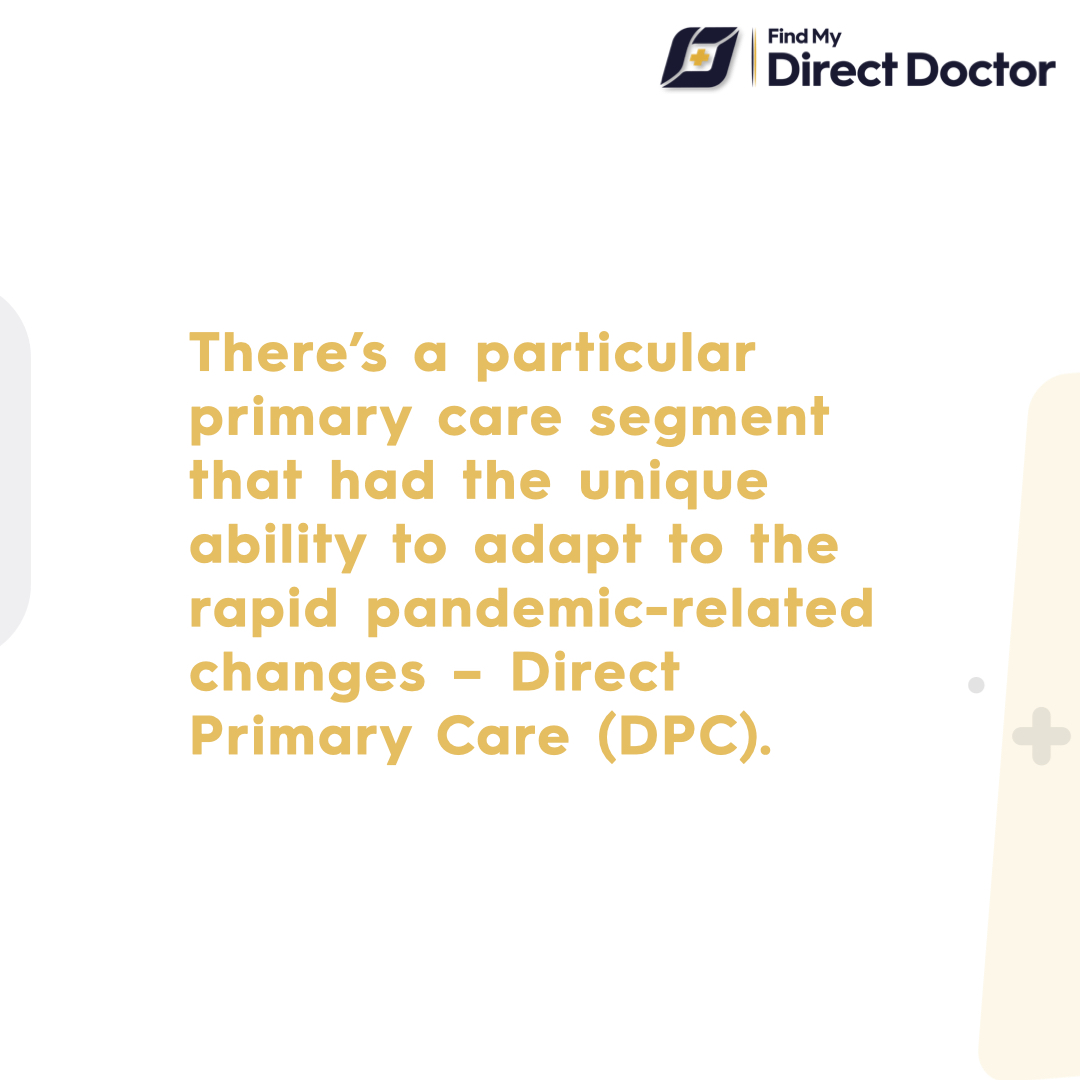



Rushed, robotic appointments; unempathetic, unavailable physicians; and, above all, soaring medical expenses that get more and more outrageous each year – this is the painful reality of health care in America.
Regarded as a looming primary care crisis, America’s traditional, fee-for-service health care system is looking a little worse for wear these days.
The COVID-19 pandemic has doubled the demand for reliable primary care, and Direct Primary Care (DPC) has come to the rescue.
Because of the urgent and sensitive nature of the pandemic, patients are no longer keen to undergo frustrating clinic appointments, much less jampacked waiting rooms.
This has shoved the problematic insurance-based model into the limelight and under public scrutiny more than ever.
A health care system overhaul has been long overdue, and a refreshing, new alternative such as Direct Primary Care could not have come at a better time.
I believe Direct Primary Care to be economically superior to the current third-party payer model of medical practice. This is especially true for primary care and non-emergent outpatient medical services, which are arguably the majority of demand in health care. - Dr. Todd Rice, MD, MBA
Primary care physicians and their patients have been made to bear such heavy burdens for too long.
Factors such as overbooked appointments, low compensation and/or unreliable reimbursements, as well as increased administrative burden have contributed significantly to physician burnout.
According to a 2020 Medscape survey, family medicine practice belongs to the top half of the list of medical specialities with the highest percentage of physician burnout.

This is why membership-based models like Direct Primary Care continue to garner some pretty loyal advocates in the industry.
For one, Direct Primary Care gives physicians the freedom to extend quality patient care without regulations or restrictions by health care third parties, such as insurance companies and corporate hospitals.
A study conducted by the Society of Actuaries (SOA) in 2020 show that a physician’s primary motivators for moving to the DPC practice were “[the] potential to provide better primary care under a DPC model” (96%), “too little time for fee-for-service visits” (85%), and “too much fee-for-service paperwork to complete” (78%).
More and more primary care physicians are now appreciating the benefits of being in the Direct Primary Care practice.
When someone pays you directly, and you cut out insurance, you get back to the heart of the physician-patient relationship. - DPC physician Dr. Chris Larson, formerly in community family practice.
He notes that Direct Primary Care is precisely what the American health care landscape is vying for.
“This is the revolution that we need in primary care for reducing healthcare expenditures, for having happier and healthier patients and, honestly, for having happier primary care physicians.”
It is no secret – when primary care physicians are happier, patient satisfaction rates go higher.
When a primary care physician’s compensation is no longer reliant on how many appointments are booked or how many billing codes are punched, doctors and their patients are free to have as much contact as needed.
Urgent medical situations are addressed with ease, and patients no longer have to go through the pains of booking appointments or getting ahold of their insurance companies first before they respond to anything.
Because DPC physicians are no longer preoccupied with billing codes and unnecessary paperwork, the bulk of their time is invested in what matters most: their patients.
This leads to a greater level of trust between doctors and their patients.
The medical industry recognizes this as a significant win for Direct Primary Care. The traditional fee-for-service model has done nothing but creates a divide between doctors and patients.
A 2014 survey reveals that a whopping 90% of patients in the DPC practice are satisfied with their care. This is a long haul compared to the 67% satisfaction rate of patients in traditional community family practice.
DPC subscription pays for itself in the form of financial savings and health care benefits, including but not limited to transparent upfront pricing, discounted lab work expenses, and the freedom to reduce your insurance plan payables.- Dr. Todd Rice, MD, MBA, An anesthesiologist and creator at the Graduate Medical Education Compliance Project.
Additionally, 97% of DPC patients affirm that their doctors take a personal interest in their health – that is more than one-third higher than that of traditional, insurance-based patients.
Important medical studies show that patients who have regular access to primary care go through less ER trips and hospitalization incidents and spend significantly less on medical expenses throughout their lifetime.
Hundreds of DPC physicians attest that, contrary to the web of problematic hierarchies and procedures the traditional, fee-for-service model has built, quality patient care is simple, straightforward, and accessible.
No wonder Direct Primary Care is seen as the future of American health care.
Those reasons alone are enough for Direct Primary Care to get our vote of confidence. Do you think you would benefit from a DPC doctor? We have the most extensive collection of DPC doctors in the US. Find your nearest DPC doctor in your area today at – findmydirectdoctor.com